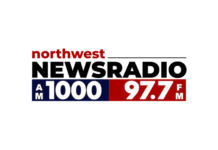

At $1 trillion dollars, student loan debt has eclipsed credit card debt for the first time in American history. To make matters worse, come July 1 the interest rate on federally subsidized Stafford student loans will automatically double, from 3.4% to 6.8%, unless Congressional action is taken to extend the lower rate before then. Depending on which side of the aisle you choose, extending the lower rate will cost between $3 billion and $7 billion per year (estimates from the center of the aisle hover around $5.5 billion).
The problem is not simply the interest rate. Loans for college are often taken out directly by parents, or guaranteed by them, and the debt can easily run into six figures. This could ultimately threaten their credit ratings, retirement funds, and even their homes. All of this boils down to a simple truth that just about anyone who is either actively paying for college or contemplating it already knows. When it comes to financing higher education in the United States, we’ve got a major problem. But if you’re like me, intuition isn’t enough. So allow me to paint you a thoroughly disturbing picture.
According to Finaid.org, parent debt relating to their children’s education has more than doubled in the last 10 years. In 2010, for the first time ever, $100 billion in student loan debt was disbursed. That’s about 10% of all outstanding student loan debt handed out in one year. It is not a problem associated with any particular tax bracket. The willingness of parents to cosign for tuition loans exists across all levels of income.
President Obama was recently criticized for his stance regarding the need for an education (I believe the exact word used was “snob”), but the desire for higher education has been part of the American persona for centuries. Around 1780, John Adams observed:
“I must study Politicks and War that my sons may have liberty to study Mathematicks and Philosophy. My sons ought to study Mathematicks and Philosophy, Geography, natural History, Naval Architecture, navigation, Commerce and Agriculture, in order to give their Children a right to study Painting, Poetry, Musick, Architecture, Statuary, Tapestry and Porcelaine.”
He also observed: “There are two types of education… One should teach us how to make a living, and the other how to live.”
God love him, Adams was part, and a perfect harbinger, of the problem that we face today. The first part of that problem is that somewhere along the way it became politically incorrect to suggest that college might not be right for every young American. Although the student loan problem was created by loans for all kinds of post-secondary education, tuition for college programs represents the vast majority of the debt especially in cases where the amount owed is large. It became government policy to encourage kids to go to college, just like it became government policy to assist everyone in buying their own home. It’s a laudable goal, and statistics indicating the lifelong value of higher education are compelling. The problem is, somebody’s got to pay for it, and with the US getting relatively poorer–straddled with huge national debt, dependence on foreign oil, and high unemployment–the burden on American families is growing geometrically with no relief in sight (other than increasing government assistance).
The second part of the problem is that while a traditional liberal arts education may be able to teach a student how to live, it often doesn’t do as well when it comes to teaching them how to make a living (unless there’s a few million in a trust fund). A study recently released by Young Invincibles, a nonprofit advocacy group for young adults, found that almost two-thirds of U.S. student-loan borrowers did not understand at least some elements of their loans or the student-loan process. About 20 percent of the respondents, who had an average of $76,000 in student debt, reported that the size of their monthly payments was a surprise. Granted this is not about the nuances of how to live well—it’s a question of how to get by, and it’s fair to say that those folks weren’t too well prepared for that.
They are also not too well prepared for making a living. A 2010 GAO report criticized the high-pressure sales tactics, lack of job placement, and student loan abuses found at many online and for-profit colleges. To qualify their students for federal loans and other benefits under Title IV (which is the provision of the Higher Education Act of 1965 under which most government-backed student loans are made), educational institutions must show that their programs offer “Preparation for Gainful Employment.” The rules require measurement of criteria such as how many students from a given school are delinquent in loan repayments, job placement success, annual gross and discretionary income of the former students once they’ve entered the workforce, and so on. Bear in mind that some for-profit schools have literally hundreds of thousands of students, and derive as much as 90% of their gross tuition revenue from Title IV financing.
The underlying cause of this proliferation of big-box education is the rapidly accelerating cost of higher education in America. According to the College Board, average inflation-adjusted tuition at public four-year colleges rose by 29% in the last 10 years; the increase at private four-year colleges was 22% during the same period. In other words, the price of a college education is rising at more than double the rate of inflation.
That said, has the value of a college education increased commensurately?
And, as prices have risen, so have student loan defaults. According to the U.S. Department of Education, the default rate rose from 7 percent in fiscal year 2008 to 8.8 percent in fiscal year 2009. Defaults increased in all sectors — from 6 percent to 7.2 percent for public institutions, from 4 percent to 4.6 percent for private institutions and from 11.6 percent to 15 percent at for-profit schools.
So let’s recap:
We start with an impulse that is part and parcel of the American dream. Well-meaning federal policy is then promulgated to encourage the pursuit of that dream, largely by means of government-guaranteed loans. The availability of that funding creates a sort of moral hazard. Enter well-meaning and not-so-well-meaning guys who encourage–fairly or fraudulently–lots of folks to take advantage of those loans so that the not so well-meaning guys can make a very large and very fast buck. Many (or most?) of the citizens who take that loan money really don’t understand what they’re getting into, and many of them (if we are honest about future potential earnings) shouldn’t be dreaming that dream in the first place. The demand created by the availability of those loans drives up the price of the dream; and then defaults increase precipitously.
[Related Story: Defaulting on Private vs. Federal Student Loans]
It’s a bit like the real estate bubble, no?
If the interest rate on student loans is doubled this summer, the camel’s back will break and we will be facing yet another large-scale crisis like the one that crippled the economy in 2008. There are a lot of people who want a college education for themselves or their kids–as there are a lot of people who want to own their own home. In the glare of hindsight they couldn’t afford it. But because they already paid for it with government-guaranteed largesse, one way or another it will become the taxpayers’ burden, unless perhaps the government does something to regulate how much a college education can cost.
This article originally appeared on Credit.com.









